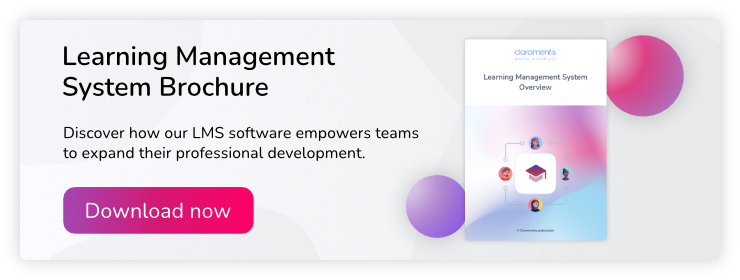The positive impact of e learning has revolutionised learning in the workplace for several years, improving efficiencies, workflow and collaboration. The flexibility offered by e-learning in terms of place of learning and time of learning means that whole education programmes can be rolled out across teams all over the world.
Within the education sector, the impact of e learning on students, from primary to university education, to deliver meaninful courses that are fun and engaging.
The results of incorporating e-learning into the education sector have helped to increase IT skills in teaching staff which can be translated into skills for the pupils.
With most businesses now operating as digital workplaces, e-learning is becoming an increasing norm in effectively and efficiently delivering education. Below we’ve highlighted some of the keyways that e-learning has positively impacted the education sector.

Flexibility
As everyone working within the UK education sector knows, time pressures for teachers and educators are becoming ever more pressing, between the time spent teaching in the classroom and the time employees have to develop their own skills.
E-learning gives total flexibility to the school and teachers as their e-learning can be accessed online, at a time to suit the individual. It’s a well-known fact amongst educators that different people learn best in different environments, e-learning gives you the flexibility to approach your training in a place that suits the learner, whether that’s a coffee shop, your desk or at home on your sofa.
If there are a refresher online course, or new online training programmes which need to be completed outside of term time, this is also made possible by e-learning courses that can be accessed at anytime and from anywhere.
Development tools
E-learning is also helping to positively impact individual development plans within the education sector, to motivate and support employees to achieve their short and longer-term career goals. Within an e-learning portal, training paths can be developed that give clear insight into the required learning that has to be undertaken before the progression can happen.
This helps the individual, teacher or educator clearly see the expectations and requirements of them to continue their progression. It also helps the manager of the individual to track progress and make recommendations based on learning still required for the person to take the next step in their career.
The learning paths can be agreed at the beginning of a term, year, or contract to ensure that all parties involved work together to achieve the end goal.
Improved communication
E-learning requires the learner to adapt their learning style into a technology-based system, often called a learning management system (LMS), which has an added benefit of improving the individual’s IT skills.
This adaptability will inspire the employee to create new ways of engaging their pupils, taking into consideration the different learning styles and requirements of their class.
For pupils who struggle to read, e-learning can provide new, fun ways of displaying letters and words which make the process of developing language a lot more successful. If the pupil isn’t particularly engaged with maths, e-learning can help to inspire gamification techniques which could make the pupil’s experience of maths far more rewarding than pen and paper-based work.
E-learning can encourage the educator to adapt their own teaching style and use more creative ways of communicating in the classroom, with a consideration of learning needs taken into account.
Management
Within the education sector, e-learning can also be used as an effective management tool, to give an insight into the development and progression of staff, highlighting potential skills gaps that need to be addressed.
Once these gaps are recognised a choice can be made as to whether to up-skill current staff, or to open opportunities to bring new staff in to fulfil the requirements required by the school or education centre. Both the ‘learning’ employee and senior management can access and download training programmes and courses designed to improve the overall offering of the teaching.
E-learning platforms give you the opportunity to download reports about the level and detail of the learning undertaken, and a record of when the learning is valid until. This will help to ensure training and learning records are up to date and that events and courses can be scheduled ahead of time to provide regular learning that will lead to consistently high teaching.
If you work within education and want to understand more about how learning impacts employee engagement and how e-learning software can benefit your school or education centre, contact Claromentis today.
We specialise in providing responsible e-learning software that is user-friendly and effective in delivering the learning you need for your team. Our software allows you to record and track progress, giving access to information about upcoming training courses and events, keeping an efficient record of the employee’s learning to date.





